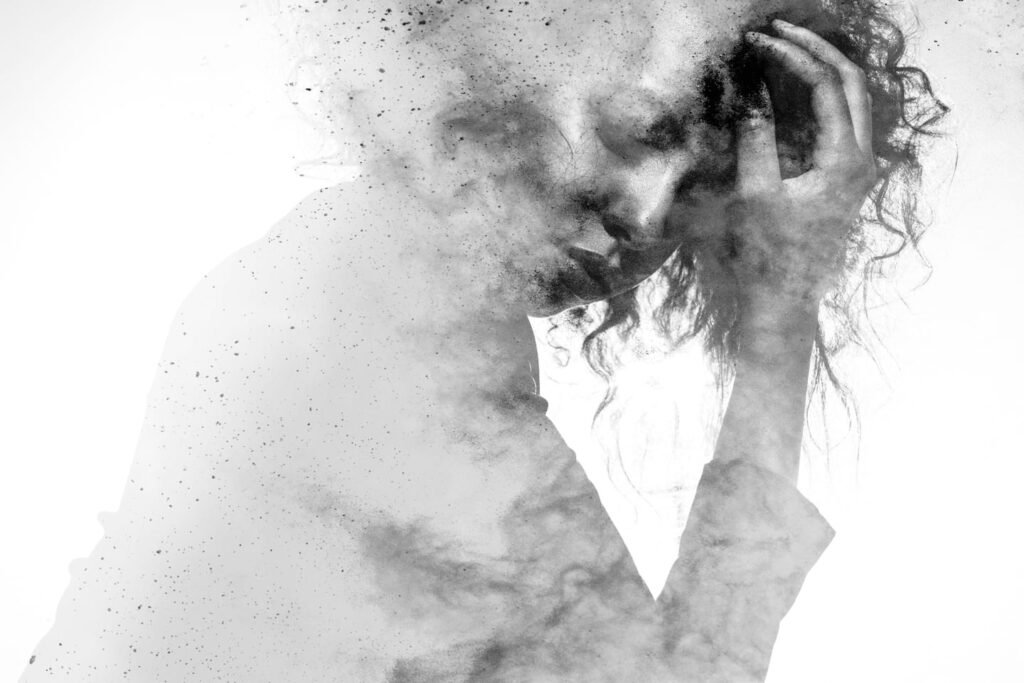With much of our society centered around the goal of achieving success and happiness, it’s easy to understand why anxiety is so prevalent. Students and young adults often face anxiety about the uncertainty of their futures, adults deal with the pressures of having successful careers and earning enough money, and parents worry about making the right decisions for their children. Changing circumstances like gaining or losing a job, divorce, moving, health ailments, and debt can cause anxiety too. Even the fear of the unknown can creep into our thoughts, threatening to further rob us of our peace of mind. With so many Americans struggling today, how do we know when normal worry becomes an anxiety disorder?
Anxiety disorders are the most common mental illnesses in America, affecting 40 million adults and over a quarter of teens ages 13 to 17. Females are twice as likely to be affected by anxiety disorders as males, which is likely related to the differing ways female and male brains react to stressors. Traci Rollinger, a licensed clinical social worker and social services manager with the Parkridge Valley Adult Campus, explains, “The brain system involved in the fight-or-flight response has been shown to be activated quicker and stay activated longer in women than in men.”


Anxiety is something that everyone experiences at one time or another. The problem occurs when the anxiety does not go away or becomes worse over time. When anxiety begins to interfere with daily activities such as school, a job, or relationships, it needs to be addressed.”
Traci Rollinger
Hormonal differences are likely to contribute to the discrepancy as well. Dr. Suzannah Bozzone, a family medicine physician with Erlanger Sports and Health Institute, says, “A common time to have increased anxiety is during large hormonal shifts, such as pregnancy, postpartum, and menopause.”
The good news is that anxiety disorders are highly treatable. The bad? Less than half of those affected receive professional treatment. Many sufferers may not realize they need help, while others may feel embarrassed or ashamed to reach out. “As humans, we like to feel like we can control what’s going on in our own lives,” says Dr. Kathleen Goyne, a psychiatrist with Tennova Healthcare. “Therefore, we tend to not want to seek intervention until we’ve exhausted our own problem-solving skills.”
When Does Anxiety Become a Disorder?
“Anxiety is something that everyone experiences at one time or another. Taking a test, starting a new job, or facing a tough situation are all common reasons to feel anxious,” explains Rollinger. “The problem occurs when the anxiety does not go away or becomes worse over time. When anxiety begins to interfere with daily activities such as school, a job, or relationships, it needs to be addressed. There are several types of anxiety disorders that exist and should be diagnosed by a mental health professional.”
Anxiety disorders typically develop from factors such as genetics, brain chemistry, personality types, and life events. They can cause people to avoid situations that may trigger or worsen their symptoms, which can affect their life immensely.
Common Anxiety Disorders



Anxiety disorder is an umbrella term that encompasses several different conditions. Each case is different, and many people may struggle with symptoms of multiple anxiety disorders. That being said, these are the major types of anxiety disorders that affect the most Americans:
Generalized Anxiety Disorder: Characterized by chronic anxiety, generalized anxiety disorder involves excessive worry and stress. Symptoms include restlessness or feeling on edge, fatigue, difficulty concentrating, irritability, sleep issues, or muscle tension. Intensity can fluctuate from better to worse at certain points, allowing sufferers to lead normal lives while struggling internally with worry and distress.
Phobias: While many people may be a bit uneasy with heights, old elevators, or new places, they can generally manage their fears and go about their day without problems. But those with specific phobias go to great lengths to avoid places, situations, or objects, even though they know there is no real danger. Common phobias tend to develop around animals, modes of transportation, germs, driving, dental procedures, and more. “Most people realize the fear is irrational,” says Dr. Bozzone, “but when a phobia disrupts our function and relationships, it can lead to significant distress and anxiety.”
Obsessive-Compulsive Disorder: Commonly known as OCD, this disorder involves repetitive behaviors (compulsions) that are associated with specific phobias or unwanted thoughts (obsessions). Common symptoms may include obsessive hand washing, counting, cleaning, and checking. These compulsions are often driven by fear and the desire for temporary relief from anxiety. Those affected by OCD typically feel intensely anxious when they’re unable to perform their rituals.
Post-Traumatic Stress Disorder: Those who were victims of or witnesses to a life-threatening traumatic event such as military combat, natural disasters, serious accidents, or abuse are at risk of developing post-traumatic stress disorder, or PTSD. While it’s normal to experience feelings of distress, fear, helplessness, or anger in the days following a traumatic event, if the symptoms don’t begin to subside after a month, it’s possible you suffer from PTSD. Other symptoms may include repetitive thoughts, nightmares, or flashbacks about the trauma, avoiding reminders of the trauma, feeling emotionally numb or detached from loved ones, being easily angered or anxious,
difficulty concentrating and sleeping, panic attacks, substance abuse, depression, or suicidal thoughts.
Diagnosis and Treatment
Physical symptoms of an anxiety disorder can be related to other health conditions, so it’s important to visit your primary care doctor for an evaluation that will include a physical examination and lab tests. Once the possibility of an underlying physical illness is eliminated, you’ll likely be referred to a mental health specialist who is trained to handle anxiety disorders. After you’re evaluated and diagnosed with an anxiety disorder, your mental health professional will discuss with you the best treatment plan to suit your needs. While everyone’s disorder is unique, many people respond well to psychotherapy, medication, and lifestyle changes, with a combination of the three proven most effective in many cases.
Psychotherapy: Whether one-on-one or in a group, psychotherapy (commonly called talk therapy) focuses on identifying your triggers and learning how to cope. Using strategic tools to help you understand your beliefs and behaviors that cause your anxiety symptoms, psychotherapy often allows you to work to strategically control your disorder and improve your well-being and quality of life.
Medication: Anti-anxiety drugs or antidepressants are the most common medications to help manage an anxiety disorder. Your health care provider can help you consider the benefits, risks, and side effects of these medications and decide which will best treat your condition. It may take several attempts to find the solution that works most effectively, so don’t give up and stop taking your medication without first consulting
your doctor.
For those who are considered treatment-resistant, ketamine infusion therapy may provide relief. Dr. Kerry D. Friesen, The Friesen Center’s medical director, explains, “Ketamine stimulates the creation of new brain cells and new neuronal connections. This leads to an increase in the levels of Brain-Derived Neurotrophic Factor (BDNF), a growth factor that is thought to be responsible for the rapid reversal of depressive or anxious thoughts.”
Lifestyle Changes: There are also other strategies you can adopt to help manage and calm your anxieties. Your physical health is inextricably linked to your mental health, so making sure you maintain a healthy lifestyle is crucial. Many doctors say that exercise and whole foods can be as effective as medication to improve your mental health. Even 30 minutes of cardio several times a week can yield drastic results, and being mindful of the foods you eat, as well as your caffeine intake, is also important; certain foods can contribute to lethargy, while caffeine can increase anxiety.
Dr. Goyne recommends keeping a mood log to track anxiety. “You can see if attacks tend to coincide with your menses, or if they generally occur on the weekend, when there’s less structure.” This can help individuals learn their triggers and prepare.
Ultimately, anxiety disorders are very individual and affect people differently, but they are almost always treatable. Dr. Goyne reminds us, “Anxiety is a problem, and problems have solutions.”



Dr. Kathleen Goyne
Psychiatrist, Tennova Healthcare



Traci Rollinger
Licensed Clinical Social Worker and Social Services Manager, Parkridge Valley Adult Campus



Dr. Suzannah Bozzone
Family Medicine Physician, Erlanger Sports and Health Institute



Dr. Kerry D. Friesen
Medical Director, the Friesen Center

